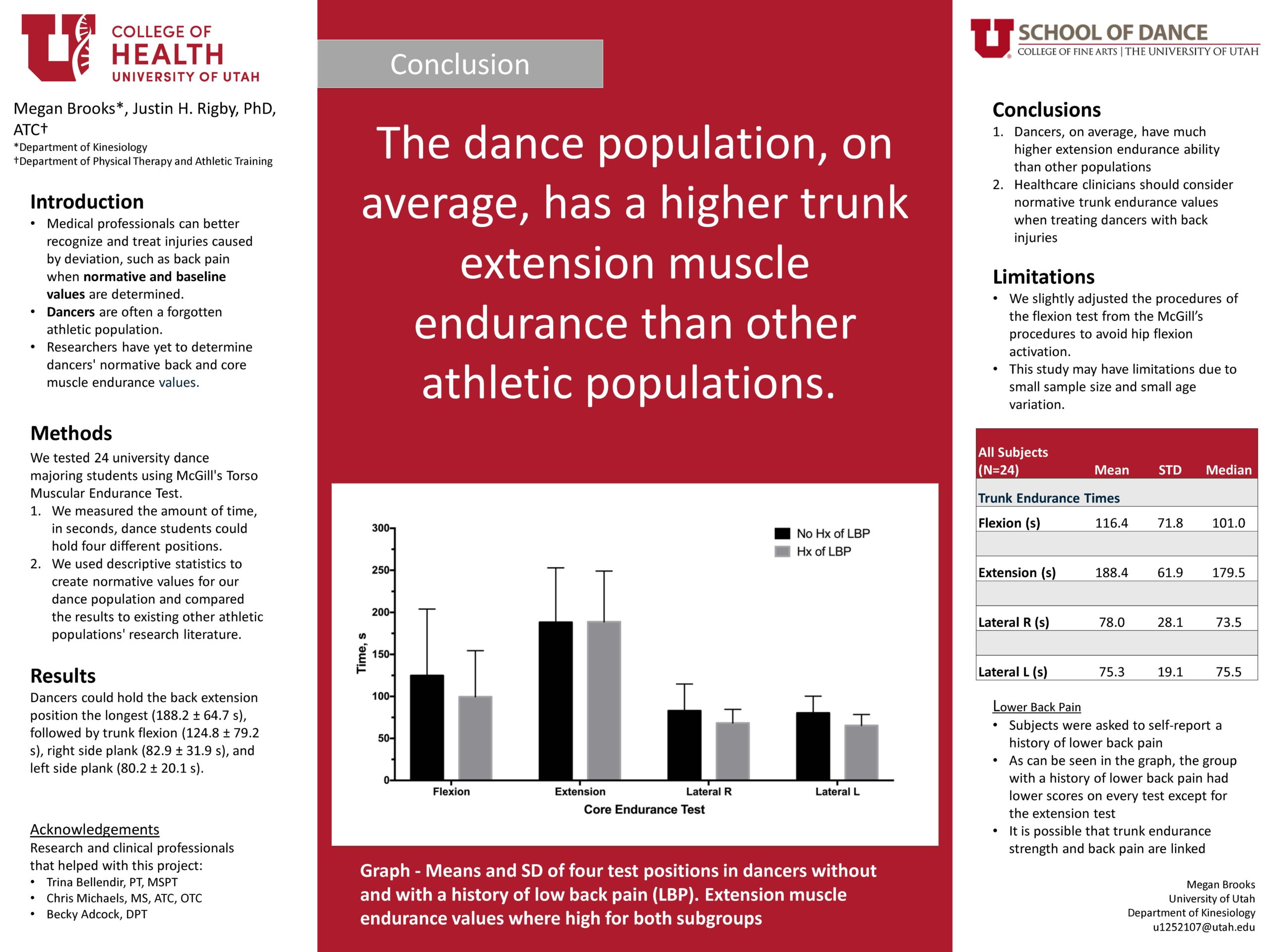Presenter Name: Megan Brooks
Description
Context: Medical providers can better recognize and treat injuries caused by deviation, such as back pain when normative and baseline values are known. Dancers are often a forgotten population. Researchers have yet to determine dancers' normative back and core muscle endurance values. Study Purpose: This study aims to 1) fill a gap and collect normative and baseline values after four trunk muscle endurance tests and 2) determine if the normative values differ between dancers with a history of back pain. Hypothesis: I hypothesized that the dance population's normative values for trunk muscle endurance tests would differ from those for other athletes. I also hypothesized that dancers with back pain would have lower endurance times. Methods: We tested university dance majoring students using McGill's Torso Muscular Endurance Test. We applied McGill's test according to standard procedures. We measured the amount of time, in seconds, dancers could hold four different positions (trunk extension, trunk flexion, and right and left side plank). We used descriptive statistics to create normative values for our dance population and compared the results to existing other athletic populations' research literature. Results: Dancers could hold the back extension position the longest (188.2 ± 64.7 s), followed by trunk flexion (124.8 ± 79.2 s), right side plank (82.9 ± 31.9 s), and left side plank (80.2 ± 20.1 s). When the data was separated into dancers with a history of lower back pain and dancers with no history, those with a history of pain had slightly lower normative averages. Conclusion: Dancers have higher extension endurance ability than other populations. Clinicians should consider normative trunk endurance values when treating dancers. They may appear to have normal levels of extension strength compared to other athletic populations but have decreased ability compared to dancer norms. Understanding dancers' trunk muscular abilities is vital to treating them effectively.
University / Institution: University of Utah
Type: Poster
Format: In Person
Presentation #A69
SESSION A (9:00-10:30AM)
Area of Research: Health & Medicine
Email: meganlizbrooks@gmail.com
Faculty Mentor: Justin Rigby

